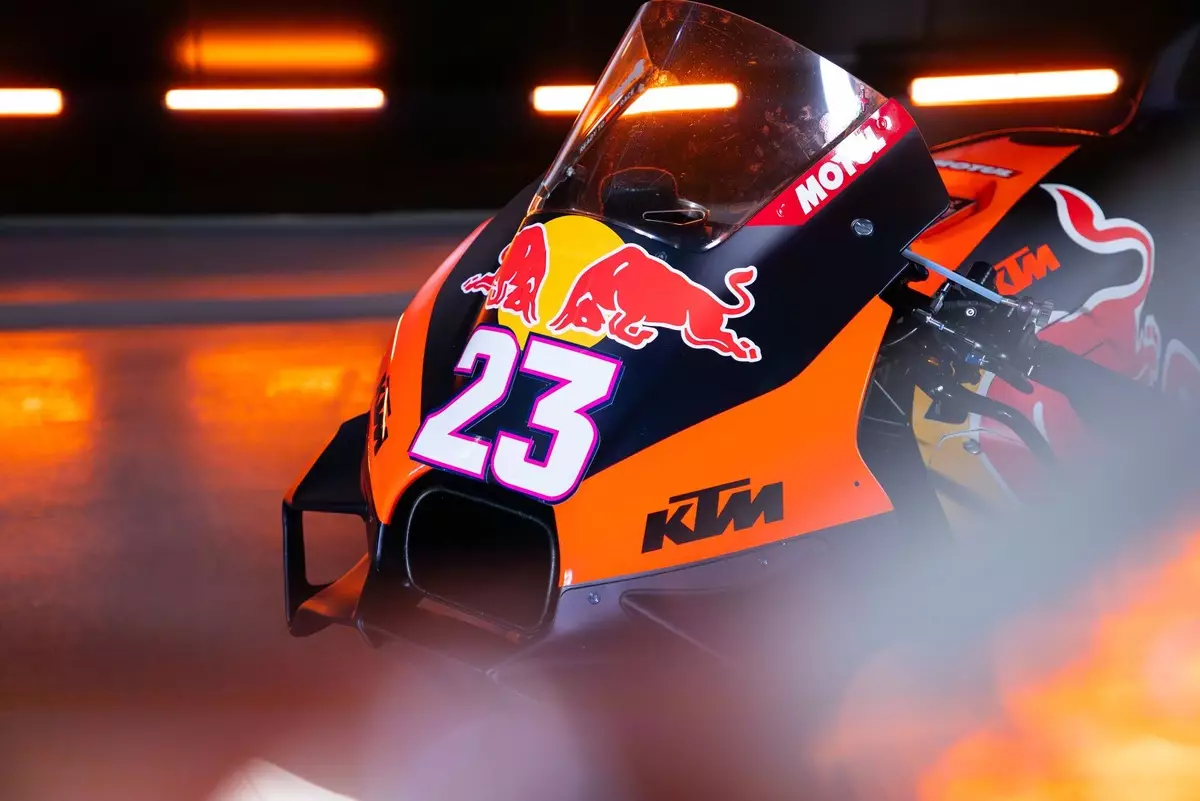As the world of motorsports eagerly anticipates the 2025 MotoGP season, KTM has positioned itself in a curious juxtaposition. On one hand, the Austrian motorcycle manufacturer celebrated the launch of its newest RC16 model, showcasing a determined spirit in the face of severe financial adversity. On the other, underneath the layers of excitement and optimism, the company’s precarious financial footing raises substantive questions about the longevity of its involvement in this high-octane championship. Despite these concerns, KTM’s management, led by Motorsport Director Pit Beirer, has chosen to downplay financial issues, focusing instead on the exhilaration of racing and the prospect of success in 2025.
The Weight of Debt: An Unspoken Reality
Yet, while the launch event was filled with enthusiasm, it conspicuously skirted the grave financial challenges that KTM faces. The company is reportedly grappling with debts totaling €2.2 billion, a staggering figure that necessitates drastic measures. Creditors are set to discuss a resolution for KTM’s insolvency plan shortly, an event that looms ominously. The pressure from creditors has intensified, prompting suggestions that KTM withdraw from MotoGP entirely or at least curtail its financial outlays in this illustrious yet expensive sport. This compounding debt crisis cannot be ignored, as reports indicate a pause in the development of the RC16 was part of the cost-cutting measures adopted over the winter, reverberating throughout the MotoGP program.
A Resilient Front: KTM’s Commitment to Racing
In response to such dire circumstances, Beirer emphasized KTM’s unyielding commitment to racing, proclaiming, “We are here to race and we are very serious about success.” His sentiments reflect a strategic choice to concentrate on competitive performance rather than internal financial turbulence. By hosting a joint presentation with its satellite team, Tech3, and unveiling several racing machines, KTM aimed to project a sense of continuity and resilience. Furthermore, the racing community often finds familiarity in the continuity of brands, helping to maintain fan engagement even when financial clouds are looming. The displayed optimism is essential—racing is interwoven with KTM’s brand identity, so presenting a resolute front becomes a necessary tactic.
Aki Ajo, the new team manager, echoed these sentiments, expressing confidence that the RC16 could emerge as a more formidable contender this season. By transforming Tech3 into a second factory team and aligning resources, KTM appears to have taken strategic steps to enhance its performance while remaining competitive. However, can ambition withstand the pressure of crippling debts? Enthusiasm is crucial, but it needs to translate into tangible success on the racetrack. Historical context informs this sentiment—often, financial instability and performance on the track are interlinked. The pressure to perform could either galvanize the team or become a source of additional stress.
As the riders—Brad, Pedro, Enea, and Maverick—gear up for the season, they embody the human spirit essential in racing. Set against financial uncertainties, each rider must remain focused and driven, drawing on their skillset and experience to navigate the challenges ahead. The riders themselves, much like the mechanical machines they pilot, symbolize KTM’s collective hope for a bright future. Their confidence can galvanize not only the team but also the fanbase, fostering a belief that even during tough times, grit and determination may lead to glory.
As KTM embarks on the 2025 MotoGP season, it walks a tumultuous path marked by ambition as well as uncertainty. With significant financial obligations looming, the company’s commitment to racing serves as both a beacon of hope and a potential smokescreen for deeper issues. The forthcoming season will undoubtedly test KTM’s endurance, both as a brand and a racing entity, compelling it to juggle the intricacies of competitive success while navigating through the shadowy presence of financial distress. Whether KTM can truly embrace the duality of risk and reward will define not only its immediate future but may also resonate throughout the corridors of the motorsport industry as a case study in navigating adversity through sheer resolve.


Leave a Reply